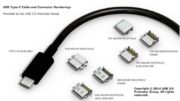Elon Musk’s Brain-Machine interface company, Neuralink, recently announced they are seeking human volunteers to begin trials. If successful, brain-machine interface (BMI) tech promises to revolutionize the way we interact with the digital world completely.
Neuralink isn’t the only player in the BMI space, either. Competitors like Blackrock Neurotech, Precision Neuroscience, and Mintneuro all promise to deliver BMI equipment and are keen to show that the tech can meaningfully improve our lives.
The recent explosion in BMI research is particularly good news for folks who live with a disability that limits their motor skills. BMIs that are capable of “reading” the brain can turn unarticulated speech into real communication, thus improving the lives of folks with motor impairments.
Understanding BMIs
Emergent brain-machine interface technology is modeled on the electrophysiology of a brain’s neural network. This means that every thought or decision we make can be correlated with an electrical chemical signal that occurs between our synapses.
Craig Mermel, the president and chief product officer at Precision Neuroscience, explains that these electrical chemical signals can be utilized by BMIs. Mermel states “It’s like a microphone; but in this case, we’re listening to electrical activity.” The information that is picked up by BMIs is then fed into machine learning algorithms which are trained to convert complex data sets into output.
BMIs can be “installed” in a variety of ways. Some companies are trialing thin tape-like tech that is inserted via cranial micro-slits, while Neuralink is experimenting with surgically placing small threads onto the brain. Neuralink will also use a robotic surgeon to conduct installation, as the threads are so fine that a human hand lacks the precision necessary to attach them.
Neuralink
Neuralink is the leader in BMI research today. This is largely thanks to the funding and profile of its co-founder, Elon Musk, who describes the technology as “a fit-bit in your skull.” Musk also believes that the emergent tech will forge new neural pathways and lead us into a future of transhumanism.
Neuralink isn’t powered by marketing prowess alone. Unlike other devices, the threads that Nueralink uses are flexible enough to penetrate both the meninges and the underlying brain tissue without straining the tech or damaging the vasculature of the brain.
If successful, Musk believes that the tech could treat neurological disorders and deepen our connection with digital tech. Some worry that increased use of AI could be reckless, but BMIs actually have the potential to resolve bio-social disorders like depression and addiction. This will dramatically improve many people’s quality of life and restore motor function for thousands of users.
IoT
BMIs are complex bits of kit but are designed to simplify our lives. They will be particularly helpful in the future when we will use more IoT devices that utilize artificial intelligence to help us manage challenges like:
- Home security
- Data security
- Energy efficiency
AI-driven IoT tech can complete complex tasks and connect to a host of devices around your home — including your BMI. This could help you identify intruders and improve your ability to manage energy use at home.
BMI-integrated IoT tech could also help you use everyday AI-driven devices like Alexa and Google Nest, too. This means that ordering groceries or changing the playlist could be completed with a single thought. This may seem like a gimmick at first, but one can only imagine how much time and effort would be saved by completing mundane tasks with a thought alone.
Challenges and Opportunities
BMI tech promises to improve our lives and deliver us into a new era of transhumanism. Many researchers are particularly excited about the potential that BMI has to improve the lives of folks with disabilities. This makes sense, as a computer interface could help some people work around their motor impairments.
Research published in Frontiers in Neurosciencehas identified a number of challenges associated with implementing BMI tech. They note that physiological and psychological differences may make it difficult to produce replicable, reliable results.
Even small differences, like a higher resting heart rate and fatigue, can have a profound impact on the user’s brain. This is a serious issue for folks living with a disability, who may have a different neurological makeup than most of the population.
The paper also points out that the “intrinsic neurophysiological instability of brain dynamics,” could undermine the performance of BMI tech. However, some studies suggest that the use of BMI machines could improve neuroplasticity and help folks interpret and respond to stimuli around them. This could signal a significant change in the way we treat mental health conditions like depression, anxiety, addiction, and trauma.
Conclusion
Brain-machine interface computers promise to revolutionize the way we interact with the digital world. Machines like the Neuralink are discreet and easily re-charged, too. However, before the tech can be rolled out, researchers must find a way to adapt to individual physiological and psychological differences. If successful, these devices could improve our quality of life, improve treatment plans for folks with disabilities, and usher in a new era of transhumanism.
This article is brought to you by Solid Signal. Shop at Solid Signal for everything you need to live your best digital life. Call us at 888-233-7563 or fill out the form below.





